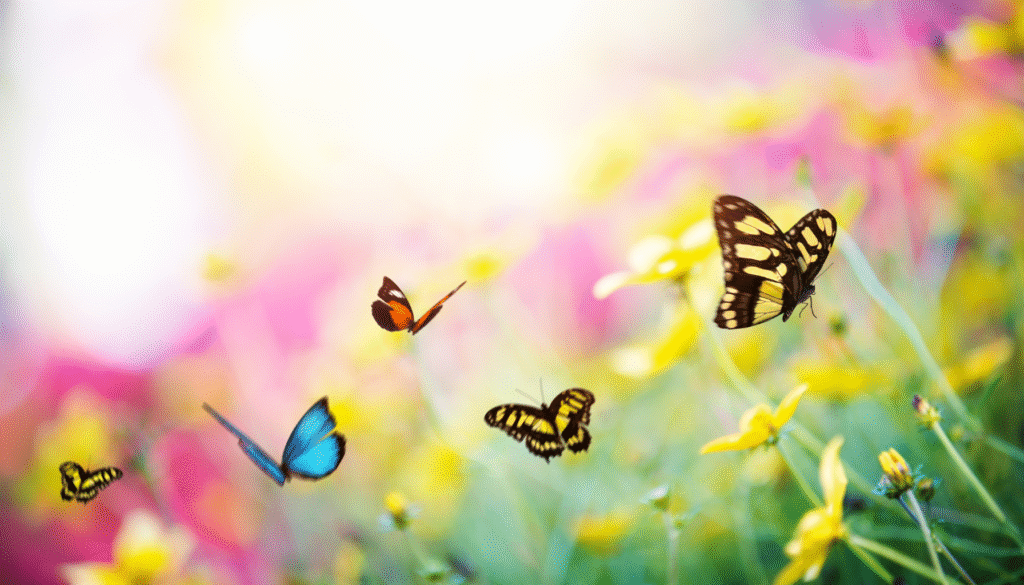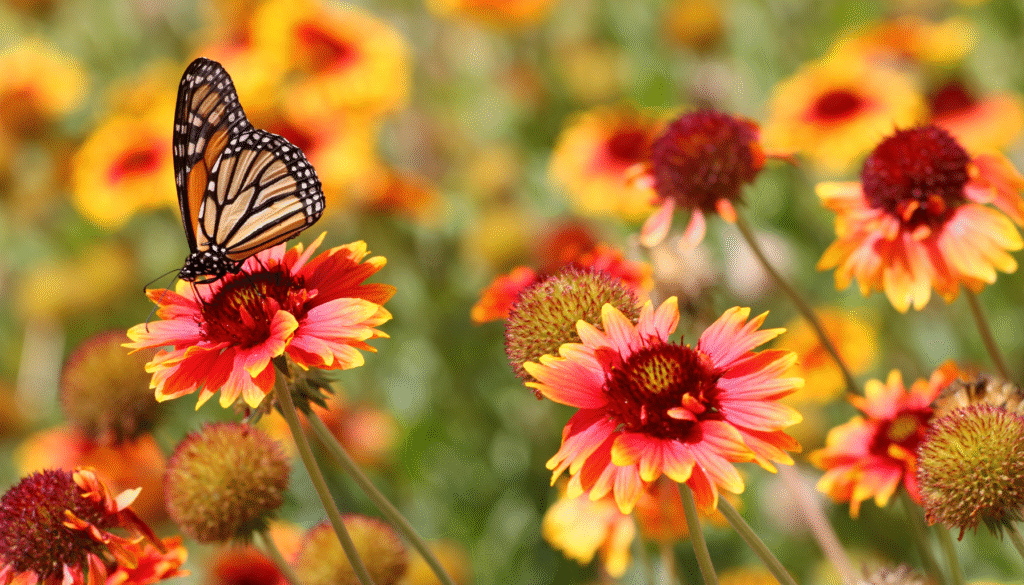Creating a butterfly-friendly garden is one of the most fulfilling ways to blend beauty, biodiversity, and sustainability into your outdoor space. This guide will walk you through 10 essential steps to help you create a vibrant, welcoming environment for butterflies — right in your backyard, balcony, or community space.
Whether you’re new to gardening or a seasoned green thumb, you’ll find practical, achievable advice to build a space that attracts and supports butterflies year-round.
Why Every Home Should Have a Butterfly-Friendly Garden
A butterfly-friendly garden is more than a pretty collection of flowers. It’s a living ecosystem designed to support butterflies through every stage of life: egg, caterpillar, chrysalis, and adult. This type of garden encourages natural pollination, supports local biodiversity, and connects us more deeply to the natural world — all while adding stunning color and life to your environment.
But how do you actually build one?
Follow these 10 detailed steps to create your own sustainable butterfly haven.
Step 1: Choose the Right Location for Sunlight and Shelter
Butterflies are cold-blooded and rely on the sun to warm up. Select a location in your garden that receives at least 6 hours of sunlight per day. If you’re working with limited space, even a sunny balcony can be transformed into a butterfly hotspot.
Make sure your space also offers some wind protection. Use shrubs, fences, or trellises to create a gentle barrier from strong gusts.
Step 2: Plant Native Host Plants for Caterpillars
To make your garden butterfly-friendly, you must provide host plants for butterfly larvae. These are the plants where butterflies will lay their eggs, and where caterpillars will feed and grow.
Some examples include:
- Milkweed (Asclepias spp.) – Monarch butterflies
- Dill, fennel, parsley – Swallowtails
- Passionflower (Passiflora spp.) – Gulf Fritillaries
Host plants are often overlooked, but they’re absolutely essential for breeding success.
Step 3: Add Nectar-Rich Flowers for Adult Butterflies
Adult butterflies need nectar to survive, and the more flowers you have, the more visitors you’ll attract.
Great nectar-producing plants for a butterfly-friendly garden include:
- Zinnias
- Lantana
- Coneflowers (Echinacea)
- Butterfly Bush (Buddleia)
- Black-eyed Susan
Plant in groups of the same species to help butterflies find food easily. Choose a mix of early, mid, and late-season bloomers for constant nectar availability.
Step 4: Avoid All Types of Pesticides
Pesticides — even organic ones — can be deadly to butterflies, especially during the caterpillar stage.
Instead:
- Embrace organic gardening methods
- Use companion planting to deter pests
- Introduce natural predators like ladybugs and lacewings
Let nature do its job. A slightly messy garden is often a healthier one!
Step 5: Create a Safe Space for “Puddling”
Butterflies don’t drink from typical birdbaths. Instead, they engage in a behavior called puddling, where they draw nutrients from moist soil or sand.
To set up a puddling station:
- Fill a shallow dish with moist sand
- Add a pinch of sea salt or wood ash
- Keep it in a sunny spot and maintain moisture
This is especially helpful for male butterflies, which use the nutrients for reproduction.
Step 6: Design with Layers and Diversity
A natural habitat has vertical diversity — tall, medium, and ground-level plants.
Include:
- Trees or shrubs for perching and protection
- Flowering perennials at various heights
- Ground covers and vines
Butterflies will use different levels throughout the day. This layered approach also supports birds, bees, and other pollinators, creating a richer ecosystem.
Step 7: Use Mulch and Compost to Feed the Soil Naturally
Healthy soil supports healthy plants — and that supports butterflies.
- Add organic compost to improve nutrient levels
- Use mulch to retain moisture and prevent weeds
- Avoid synthetic fertilizers that can disrupt the soil’s microbiome
This sustainable approach ensures your garden thrives naturally, without chemicals.
Step 8: Add Sun-Warmed Rocks for Basking
Butterflies warm their wings by basking in the sun. Add flat rocks in sunny spots where butterflies can rest and regulate their body temperature.
Place the rocks near nectar plants so they’re easily accessible. This simple addition helps butterflies stay active and healthy.
Step 9: Encourage a Continuous Bloom Cycle
A butterfly-friendly garden must offer nectar throughout the entire season. Plant a combination of:
- Early bloomers (e.g., violets, phlox)
- Mid-season flowers (e.g., bee balm, cosmos)
- Late bloomers (e.g., goldenrod, asters)
This ensures that food is always available, supporting both resident and migrating species.
Step 10: Keep Observing and Learning
A great gardener is always a great observer. Track which butterflies visit your garden, what plants they prefer, and when they arrive.
Use apps like iNaturalist or Butterflies and Moths of North America to log sightings and learn more about local species.
This not only improves your garden but deepens your appreciation for the role butterflies play in nature.

Keep the Magic Alive in Your Butterfly-Friendly Garden
Now that you know how to build a butterfly-friendly garden, it’s time to get your hands dirty and start planting! Follow these 10 proven steps and you’ll soon be rewarded with a garden full of fluttering wings, vibrant blooms, and a renewed connection to nature.
Want to explore more eco-friendly gardening ideas?
👉 Check out our guide Top 10 Easy-to-Grow Plants for Beginners.
👉 Visit How to Grow Herbs Indoors All Year Long.
Don’t leave now — browse our other articles and keep making your home a haven for life!




Pingback: 7 Fascinating Facts About Butterfly Wings Patterns and How to See Them in Your Garden - luvivihe